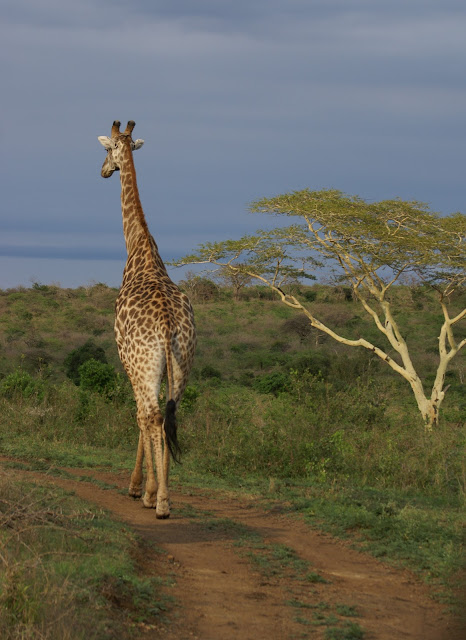My guest photographer this week is Peg Cancro, a good friend from my Kalamazoo days and sometime visitor to Grand Traverse and Leelanau Counties. She has traveled extensively and is going to share images from one of her trips.
PEG: I was flattered to be selected as a guest photographer for Karen's blog. I have been shooting photos since I was in high school. My uncle loaned me his camera, a Honeywell Spotmatic f, for my high school trip to Spain and I was hooked. When I got my first job, I saved up and purchased that model. I loved that camera because it had a unique feature that showed you your actual depth of field so you could be assured of the effect you were going for with f stop and speed. In those days you had to carefully wait for your shot since film was expensive and you didn't have the luxury of taking too many pics.
These days I am shooting with a digital Sony - it is a blessing and a curse. You take lots of photos because, well, you can. Then choosing the right photo to share at times becomes daunting. So what follows is a small selection of my trip to South Africa. Everything in South Africa seems exotic and you are constantly pinching yourself when you see all the majestic animals and landscapes it has to offer.
The Big Five are named so because they were the most difficult of animals for hunters to kill. South Africa affords you an opportunity to see them all. They are the Elephant, Lion, Cape Buffalo, Rhino and Leopard. One of the more interesting features of the elephant is its trunk. It can smell scents up to 19 kilometers, can hold 12 liters of water, can reach branches in trees and snap them off, averages 13 ft in length and is used to carry stuff as well as uproot trees!
The Lion is definitely the king of the jungle, and while not the largest animal, it is the largest predator, lives mostly a solitary life, and is very territorial. It can have up to 20 females in his pride and maybe a young male or brother.
The Cape Buffalo is part of the Big 5 because they have killed more hunters than any other species and have been known to kill lions if attacked. They are excellent swimmers and can reach up to 11 feet in length and weigh up to 1900 lbs.
Black rhinos are the most endangered species. There are two kinds - white and black rhinos - nothing really to do with their color, they both are greyish in color. White rhinos are square lipped, their first horn is much larger than their second horn, ears are tubular, and their elongated head is usually pointed downward. They also are more social like cows. Black Rhinos are smaller than white rhinos, have narrow lips, a more pointed mouth, rounded ears, and concave backs. Their heads are rounded and generally point upward.
Unfortunately, we never did get to see the elusive and rare Leopard which usually hunts at night and brings his prey up into the trees where he feeds and sleeps! There were, however, many other wonderful animals, like this Cheetah, the fastest land animal, capable of speeds 50-80 mph. Sometimes Leopards and Cheetahs are confused with each other because they both seem to have spots. But in actual fact, a leopard has rosettes, or rose-like markings, and Cheetahs have solid round or oval spot shapes.
Another stunning creature we saw was the Giraffe, the tallest living terrestrial animal, here walking by a Fever Tree, similar to the iconic symbol of Africa, the Acacia Tree, more commonly known as the Umbrella Thorn. The Fever Tree is yellowish and green-leaved, while the Umbrella Tree is darker and thorny.
Notice on the head of this Giraffe is a bird, the Oxpecker, also known as the Tickbird. The giraffe and the oxpecker have a symbiotic or mutualistic relationship. The bird gets an easy meal by eating parasites, such as ticks and blood-sucking flies, from the giraffe’s body, and this keeps the giraffe’s parasites under control.
One of my favorite birds in South Africa was the South African Masked Weavers. They are colorful and noisy, in a good way, and the males are very busy.
In the mating season they will mate on average with 5 females. To attract them they weave on average 25 nests. The female comes and inspects them. If she finds a home that she likes, she moves in and starts to make it homey with nesting materials like leaves. If she doesn't like it, she sometimes will cut the nest from the branch showing her displeasure.
It takes the male South African Masked Weaver 9 to 14 hours to complete one nest. You can see why from his finished work-of-art. Today’s photographs make up just a small sampling of the enchanted countryside of South Africa. I hope you’ve enjoyed the “trip.”
NEW KNEE UPDATE: Thank you, Peg, for these amazing pictures from your South Africa trip. I’m now nine days out from my right knee replacement. Things are going well with the healing. The new knee is functioning well and I can walk better with it than the old. The main challenge is trying to establish a regular sleep pattern, which can be hard depending on my pain levels, medications, and comfort in my recliner, my current "bed" of choice. But, I AM coming along. Better than I ever imagined.












Hi, Karen. I greatly enjoyed Peg's wonderful photos from her trip to South Africa and reading the interesting background information.
ReplyDeleteGlad you enjoyed Peg’s post, Jan. She has some great travel inages.
ReplyDelete